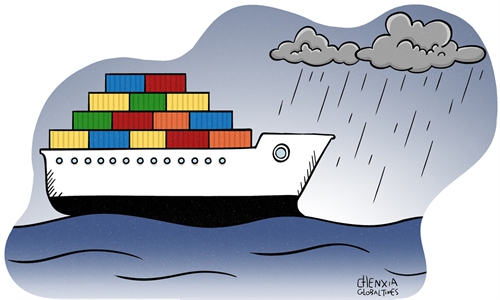
A view of a production line of a smartphone factory in India. Photo: VCG
Since imposing an approval requirement for foreign investment from countries that share a land border with India in April 2020, the Indian government approved 80 proposals involving Chinese entities as of June 29, Indian media outlet The Economic Times reported on Wednesday. During this period, India received 382 investment proposals from Chinese entities.While the report claimed that India has eased some restrictions on Chinese investment since mid-2021, the relatively slow approval pace is indicative of the government's cautious approach toward foreign direct investment (FDI) proposals from China.
Some Indians may believe that measures such as curbs on Chinese investment won't affect the country's appeal to foreign investment from other countries. However, India's approach toward Chinese investment and Chinese companies could also serve as a warning for other foreign companies, who may worry about whether the Indian government will impose restriction on them for various reasons in the future. India's unpredictable and overcomplicated foreign investment approval system could be a hidden problem for its ambition to boost economic development through attracting foreign investment.
For a long time, India has been eyeing a goal of becoming a manufacturing power by attracting foreign investment to cultivate its own domestic industrial economy, but its protectionist policy has been questionable as conflicting with its goals. For instance, India's crackdown on Chinese investment has actually ceded development opportunities to Vietnam.
Before 2020, there was once heated discussion as to whether Vietnam or India will undertake China's industrial transfer to be the world's next manufacturing hub. Now the situation is already clear as the Vietnamese manufacturing has shown more resilience and growth potential during the pandemic. During the first quarter of this year, Vietnam's GDP grew about 5 percent, while its merchandise trade reached $176.35 billion. The country's exports in the first quarter hit $88.58 billion, up 12.9 percent year on year. An important reason behind Vietnam's rapid development is its friendly foreign investment policy.
Some may argue that India and Vietnam have different development strategies given their different economic conditions. But if attracting foreign investment is still crucial to India's development strategy, then Vietnam's experience may still be of good reference to a certain extent.
Uncertainty surrounding India's treatment of foreign investment may seem to just harm the interests of Chinese companies in the short term, but in the long term, it is India's reputation for attracting foreign investment and foreign companies' confidence in the investment environment that have been hurt.
China and India share common interests on many fronts, of which the two Asian countries still have great potential to tap in terms of economic and trade cooperation. Hindering the ongoing transfer of manufacturing from China to India is not conducive to the development of Indian manufacturing and poverty alleviation.
In 2006, China and India reportedly signed an agreement on promotion and protection of bilateral investment. Such kind of agreements could be positive factor for bilateral investment. Given China's investment potential and India's economic development needs, it is necessary for both sides to discuss and explore a more rational and transparent investment mechanism.
Over the years, Indian investment in China also increased, mainly in the pharmaceutical sector. So the need for interactive cooperation still exists. From a broad perspective, stable development and cooperation between Asia's two largest developing economies will also contribute to economic prosperity across the region.



